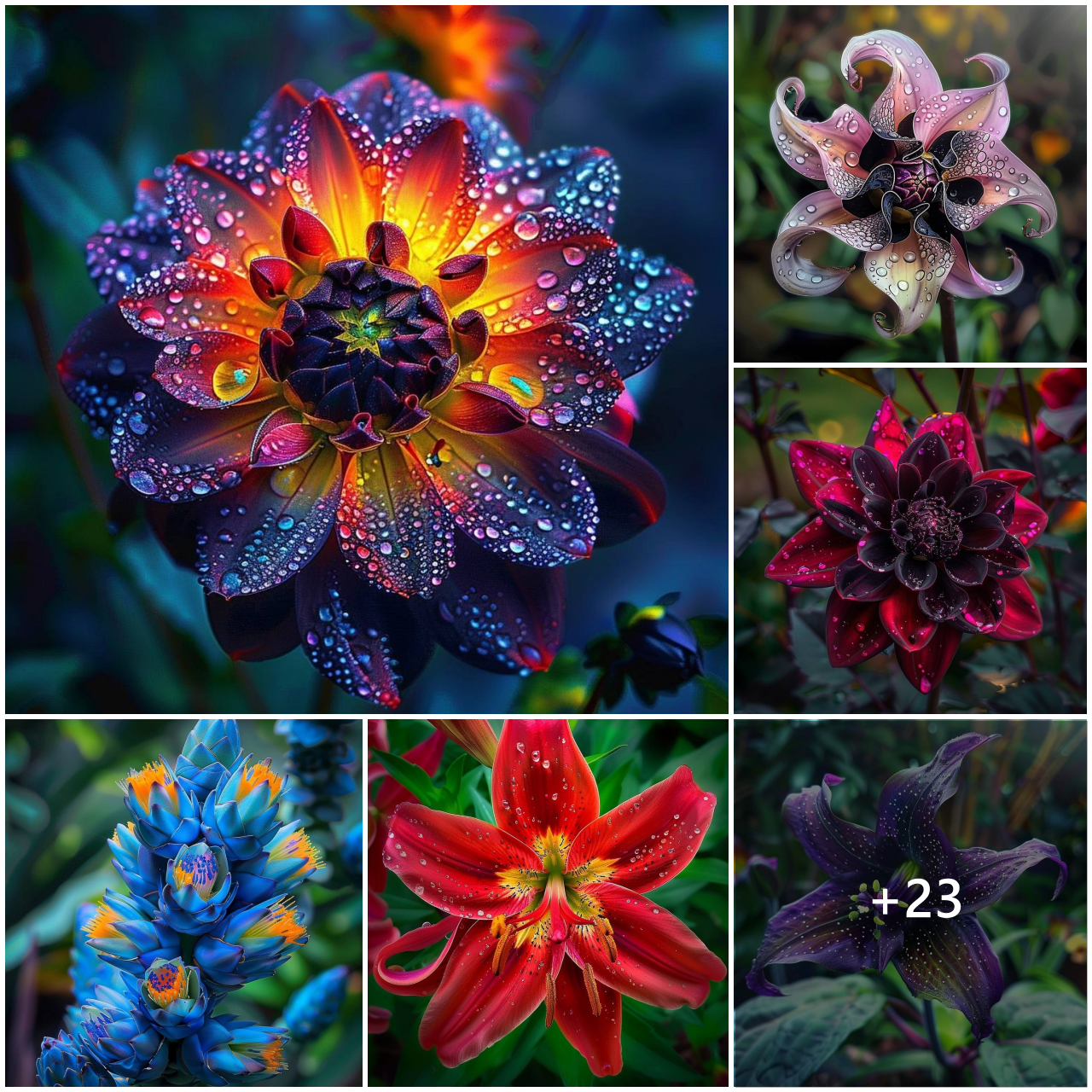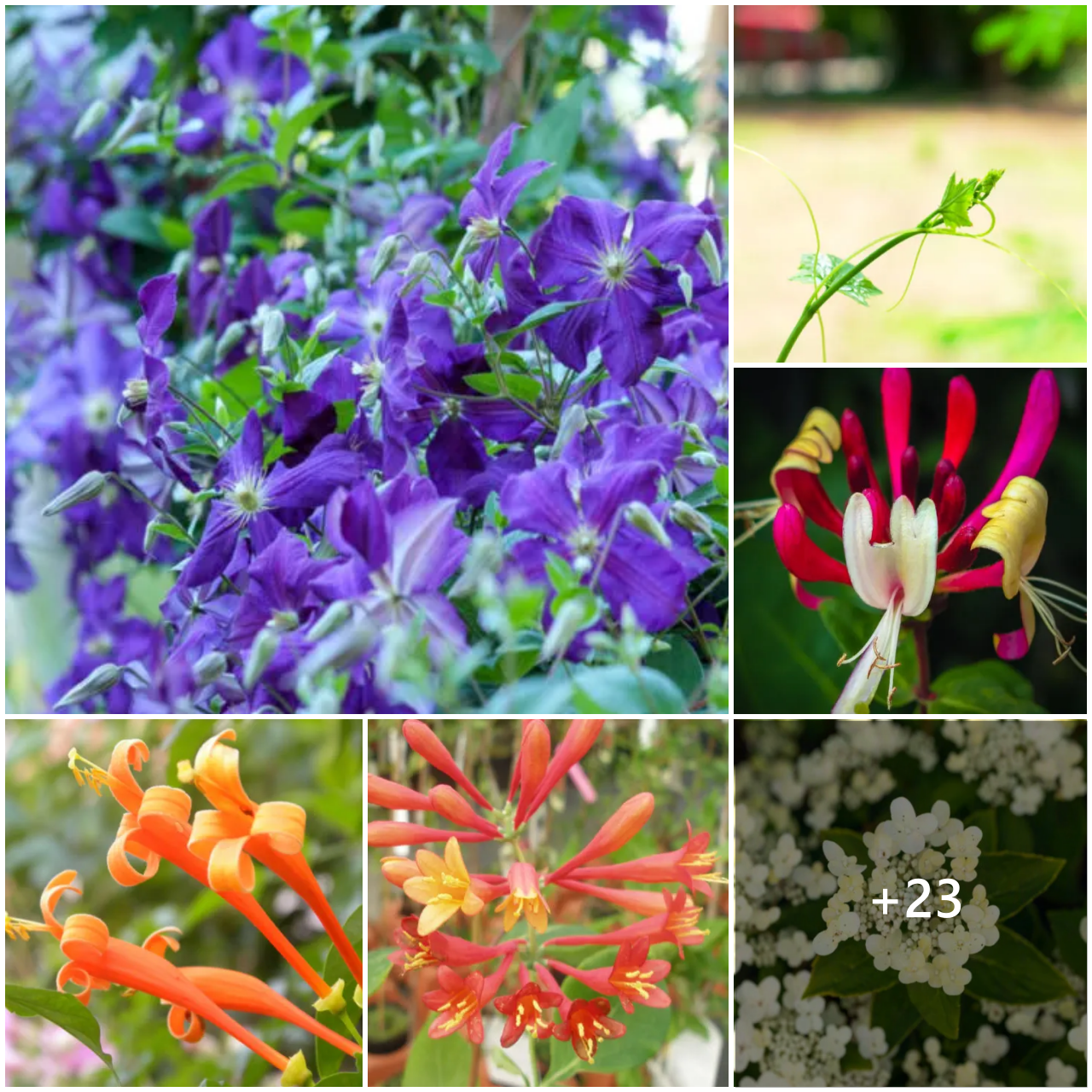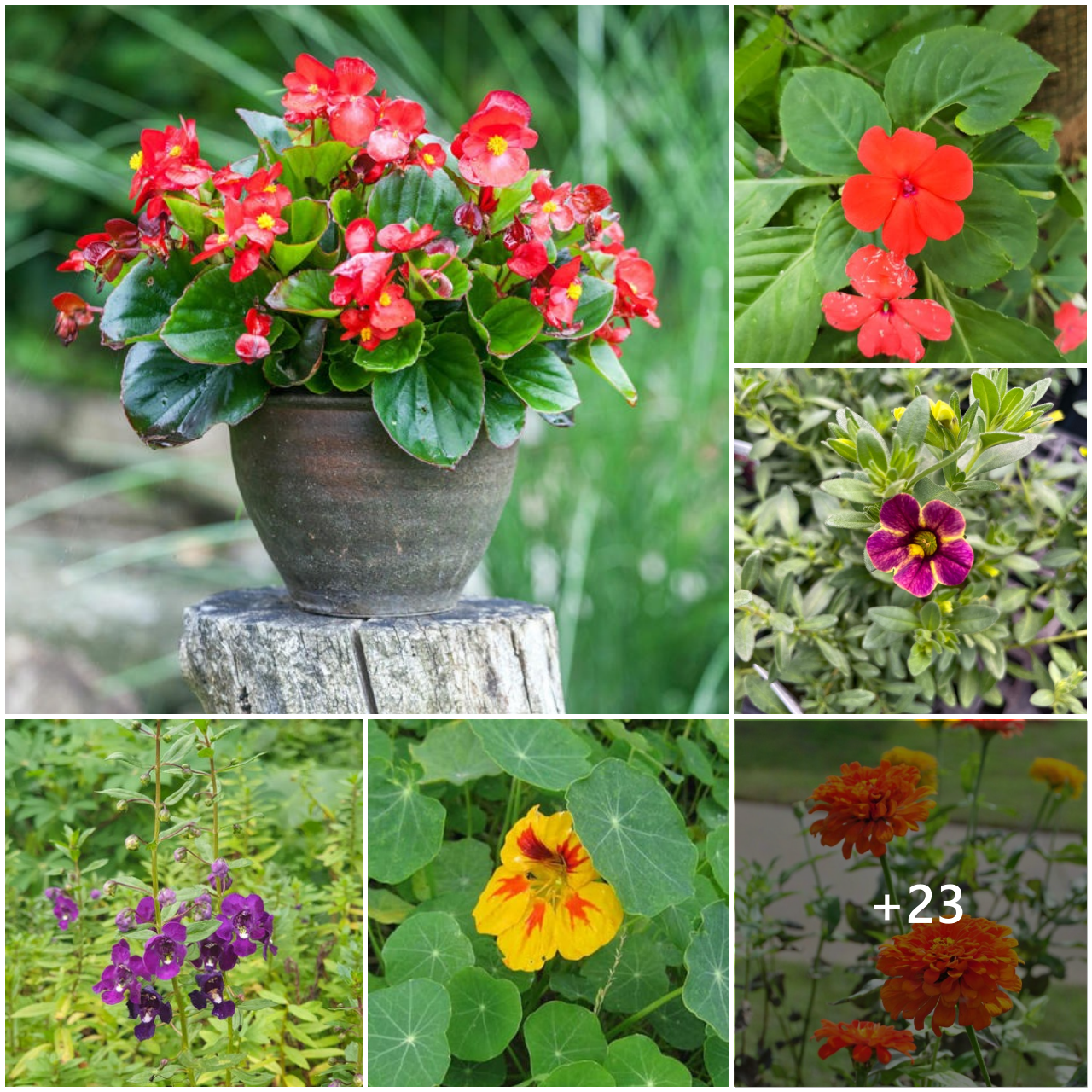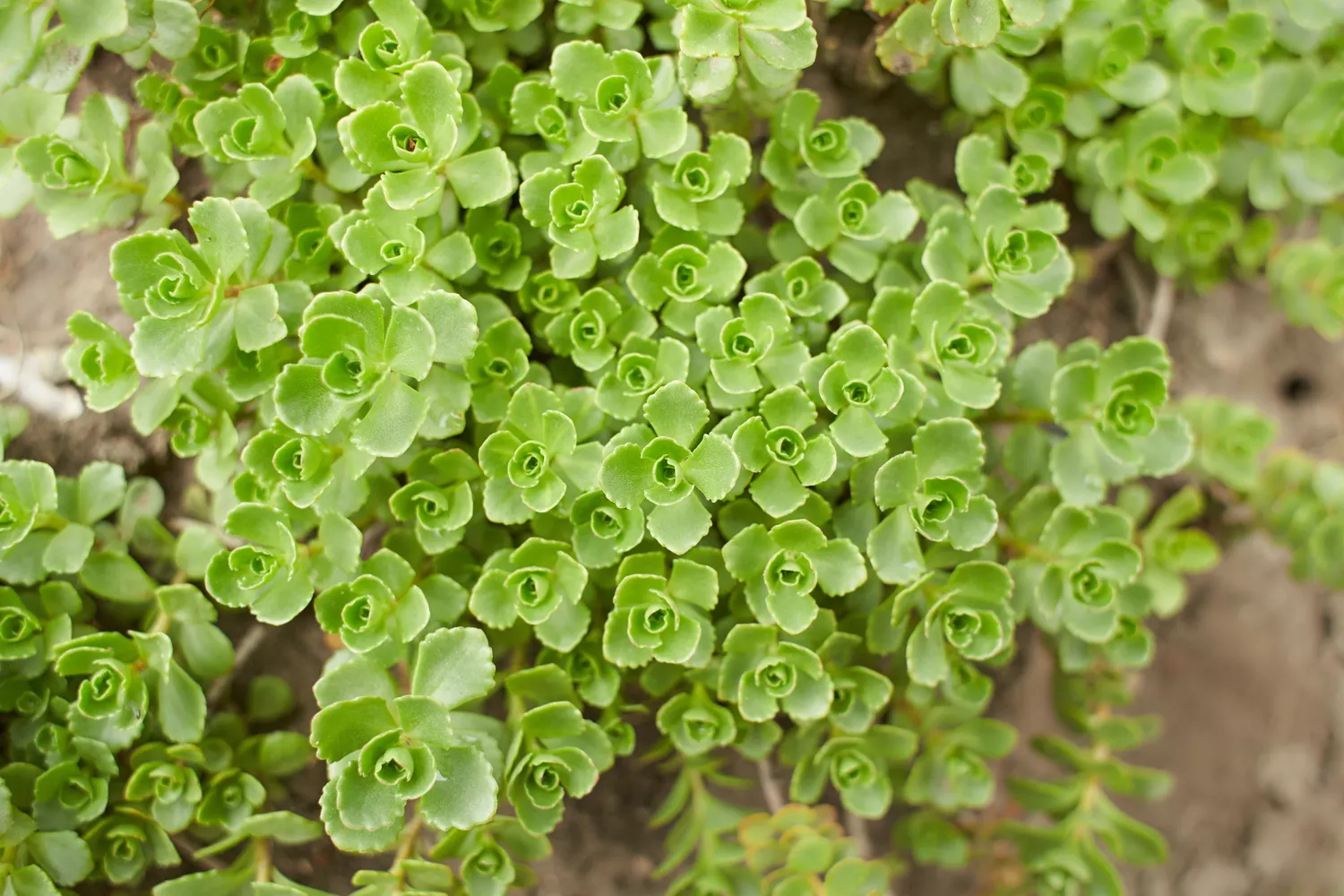
Getty Images / Irina Pislari
Americans are rethinking their relationship to lawns. While traditional turfgrasses do serve many purposes in the landscape, such as erosion control and mitigating solar heat, they are not always the best solution. They require vast amounts of time and resources to maintain while supporting little ecological diversity. In the face of increasing drought and water restrictions, the time has come to consider grass alternatives.
Whether you are wanting to attract more pollinators to your landscape or are looking to replace struggling turfgrass in the shade, there is a grass alternative to meet your needs. Consider the function you want your lawn area to serve when selecting plants. Lawns are traditionally used to stabilize soil and provide a surface for playing, walking, or gathering. In landscape design, lawns create cohesion, providing an open framework around which gardens are laid. From flowering perennials to native turf species, there are grass alternatives to meet each of these needs. Often, the best solution is a mosaic of several low-growing plants.
Creeping Thyme
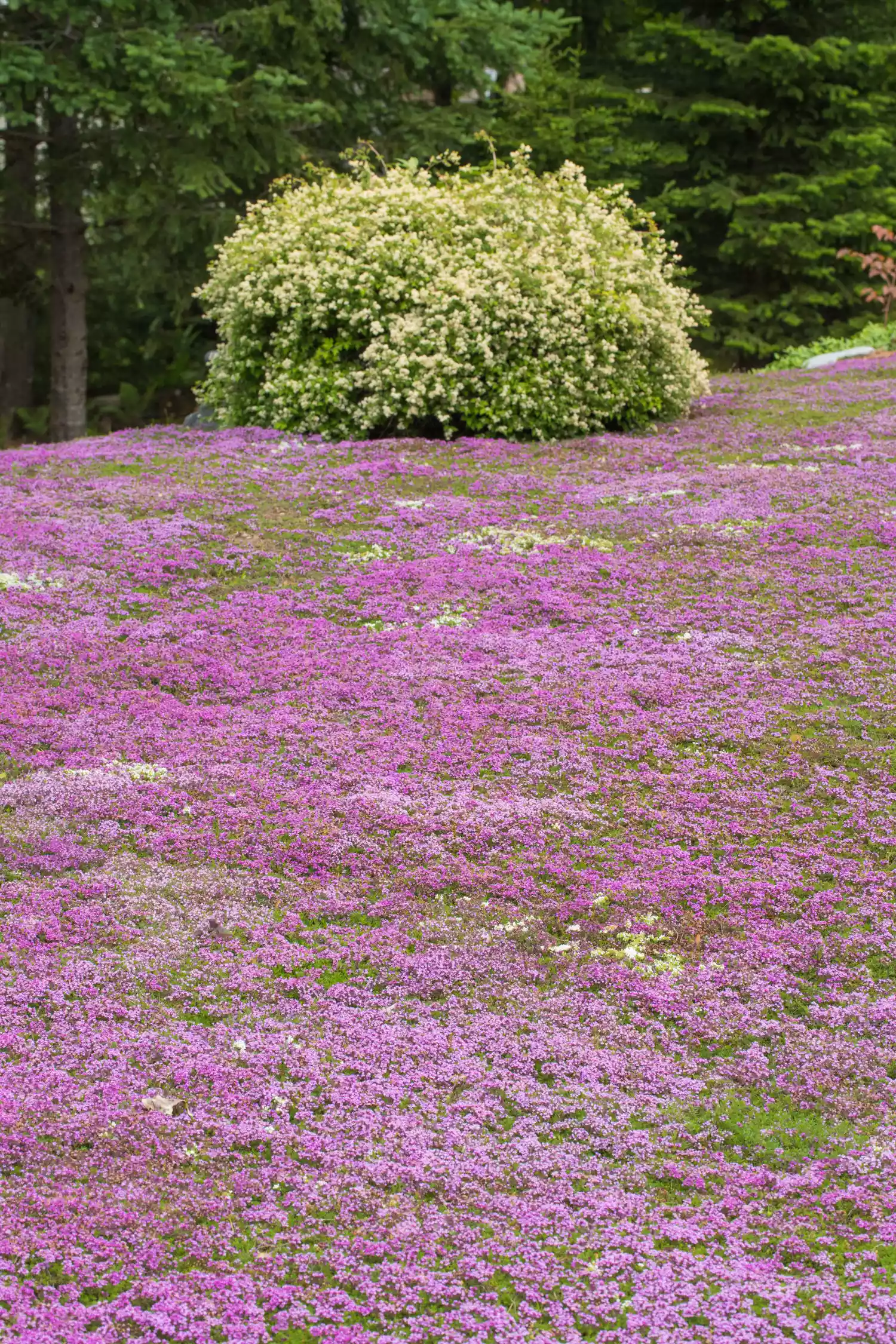
Getty Images / Laszlo Podor
- Botanical Name: Thymus serphyllum
- Sun Exposure: Full Sun
- Soil Type: Dry to Average, Well-draining
- Soil pH: Neutral (6.5-7.5)
Creeping thyme tolerates moderate to heavy foot traffic, making it a suitable alternative to turf in many areas of the landscape. Showy, dark pink flowers cover the cushiony foliage in early summer, attracting butterflies and other pollinators. Evergreen in mild Southern winters, the blue-green foliage releases a pleasant fragrance when walked upon. Creeping thyme does not tolerate wet soils. Cut back stems as needed to reduce woody growth.
Green and Gold
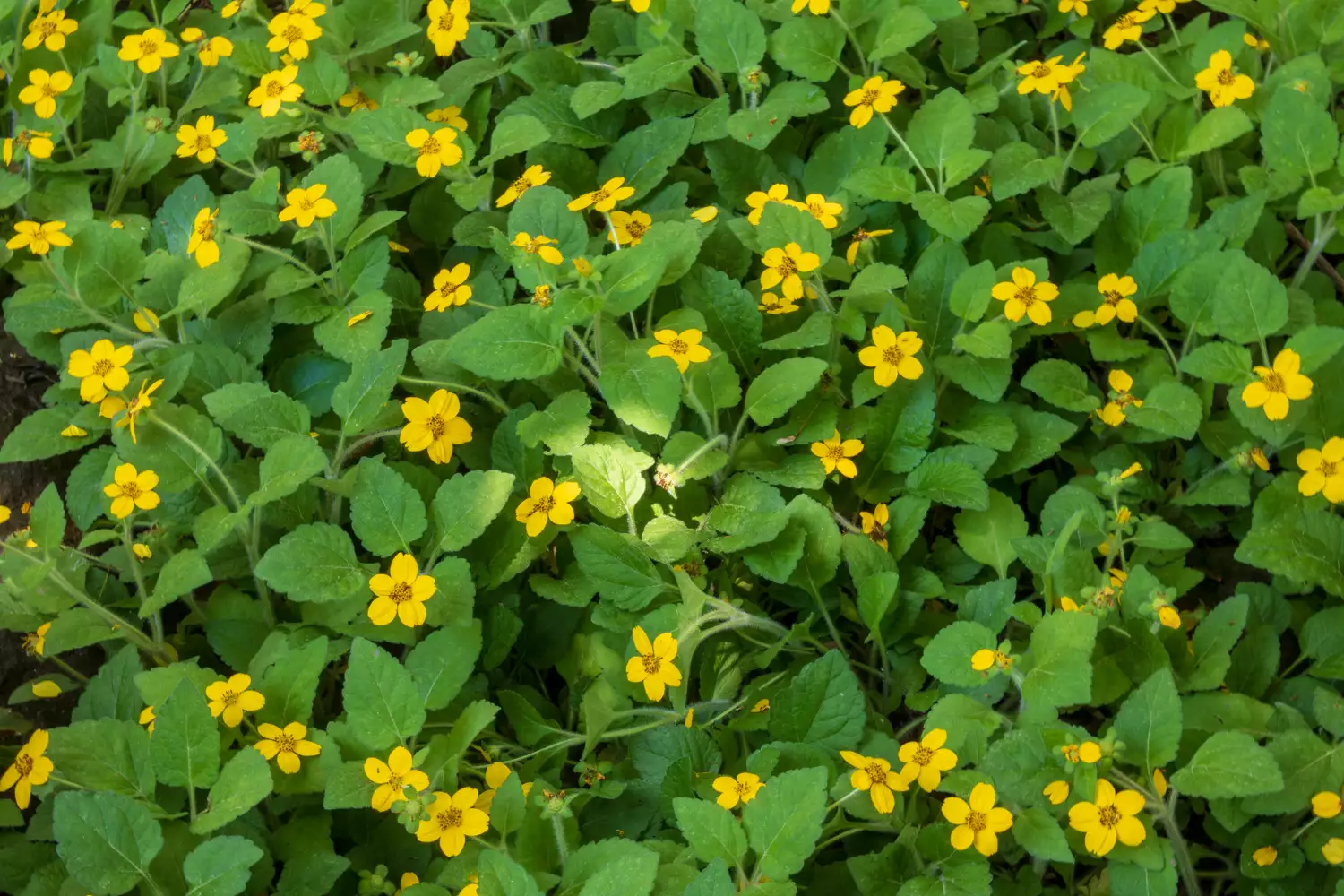
Getty Images / Jennifer Yakey-Ault
- Botanical Name: Chrysogonum virginianum
- Sun Exposure: Full to Partial Shade
- Soil Type: Moist, Well-draining, Rich
- Soil pH: Acidic (6.0-6.8)
This native groundcover creates a mat of bright green foliage topped with sunny yellow flowers. Plants bloom heavily in spring through early summer, then on and off throughout the remainder of the growing season. Green and gold provides a gorgeous alternative to grass beneath trees. It also looks fabulous edging woodland paths. Plants spread by rhizome and may self-seed in the garden but are easy to keep contained. Note that foliage is semi-evergreen and may go dormant in winter.
Creeping Speedwell
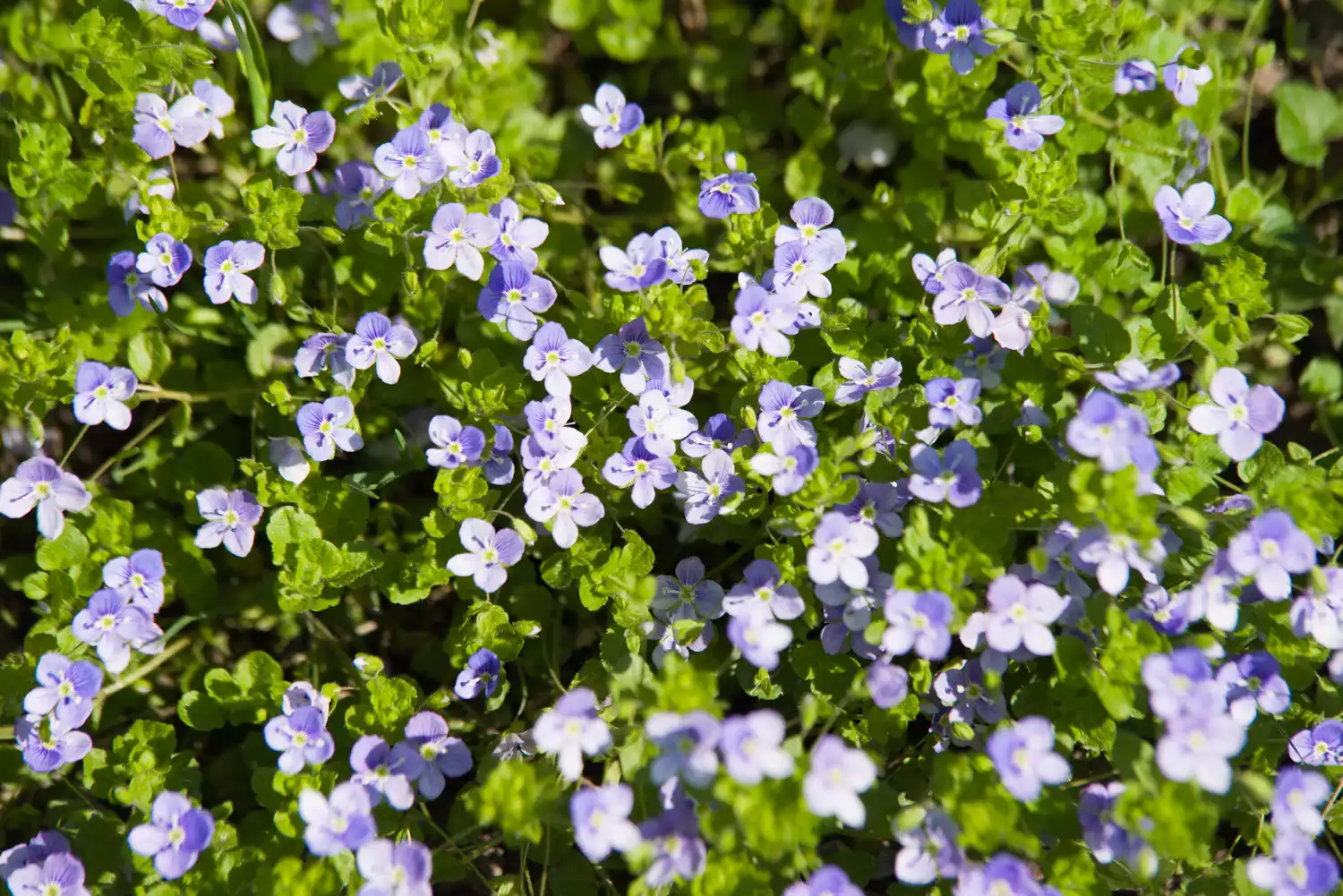
Getty Images / s1llu
- Botanical Name: Veronica repens
- Sun Exposure: Full to Part Sun
- Soil Type: Average, Well-draining
- Soil pH: Slightly Acidic to Slightly Alkaline (6.0-8.0)
Another hardy groundcover for areas with moderate foot traffic, creeping speedwell produces a carpet of deep green evergreen foliage. Spring brings a flush of dainty white to lavender-blue flowers, while autumn paints the foliage with burgundy accents. Creeping speedwell makes a great lawn substitute and works well between pavers or as an edging along pathways. Plants resist deer and rabbit browsing.
Blue Star Creeper
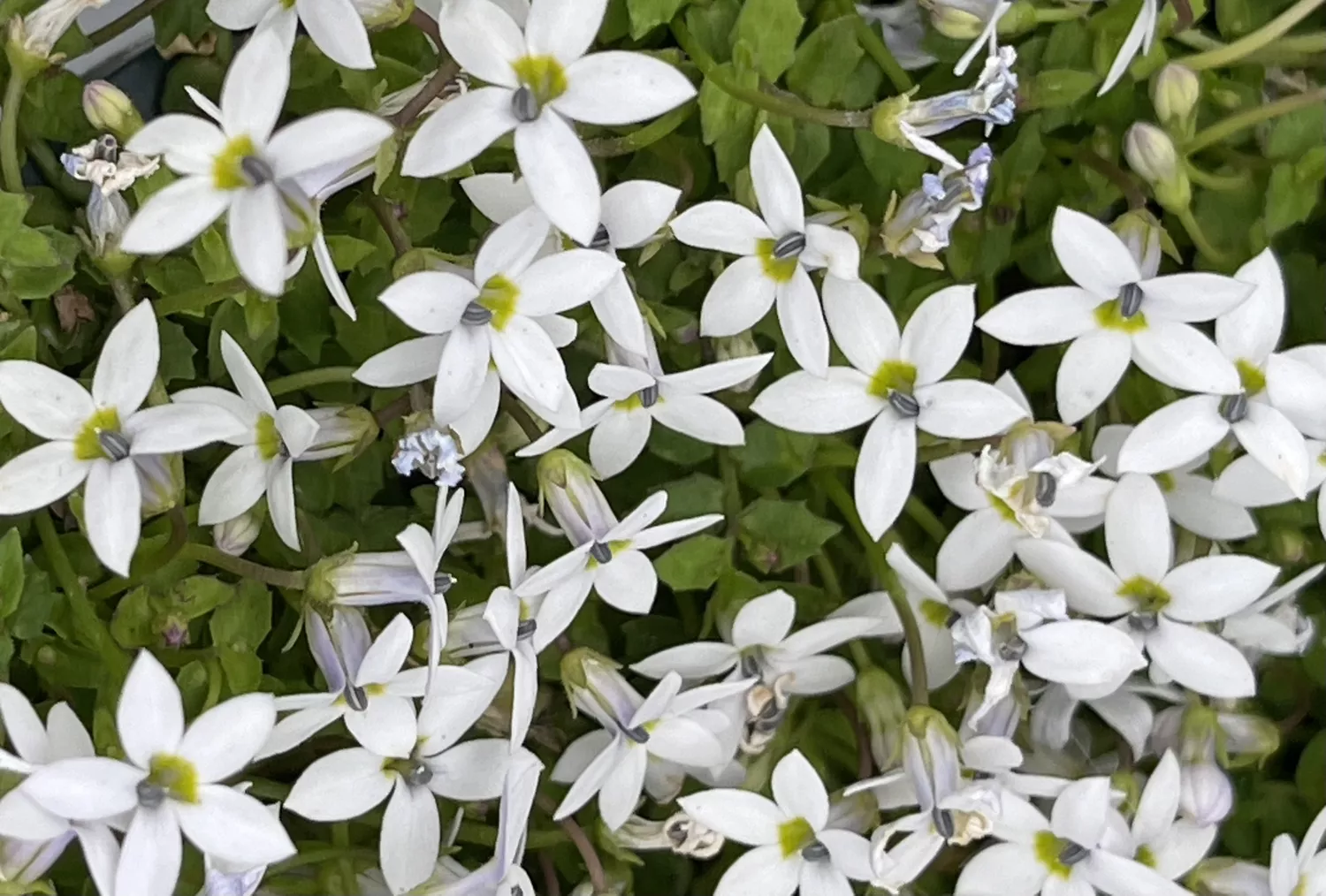
Getty Images / Raj Kamal
- Botanical Name: Laurentia fluviatilis
- Sun Exposure: Part Shade; Morning Sun
- Soil Type: Moist, Well-draining
- Soil pH: Slightly Acidic to Neutral (5.5-7.8)
Blue star creeper forms a lush mat of deep green foliage that stands up to kids and pets. Plants bloom over a long season from spring through summer, covering plants with white to pale blue blossoms. Blue star creeper is an excellent lawn substitute and looks great between pavers or as an edging plant. In hot Southern gardens, plants perform best in dappled or afternoon shade.
Pennsylvania Sedge
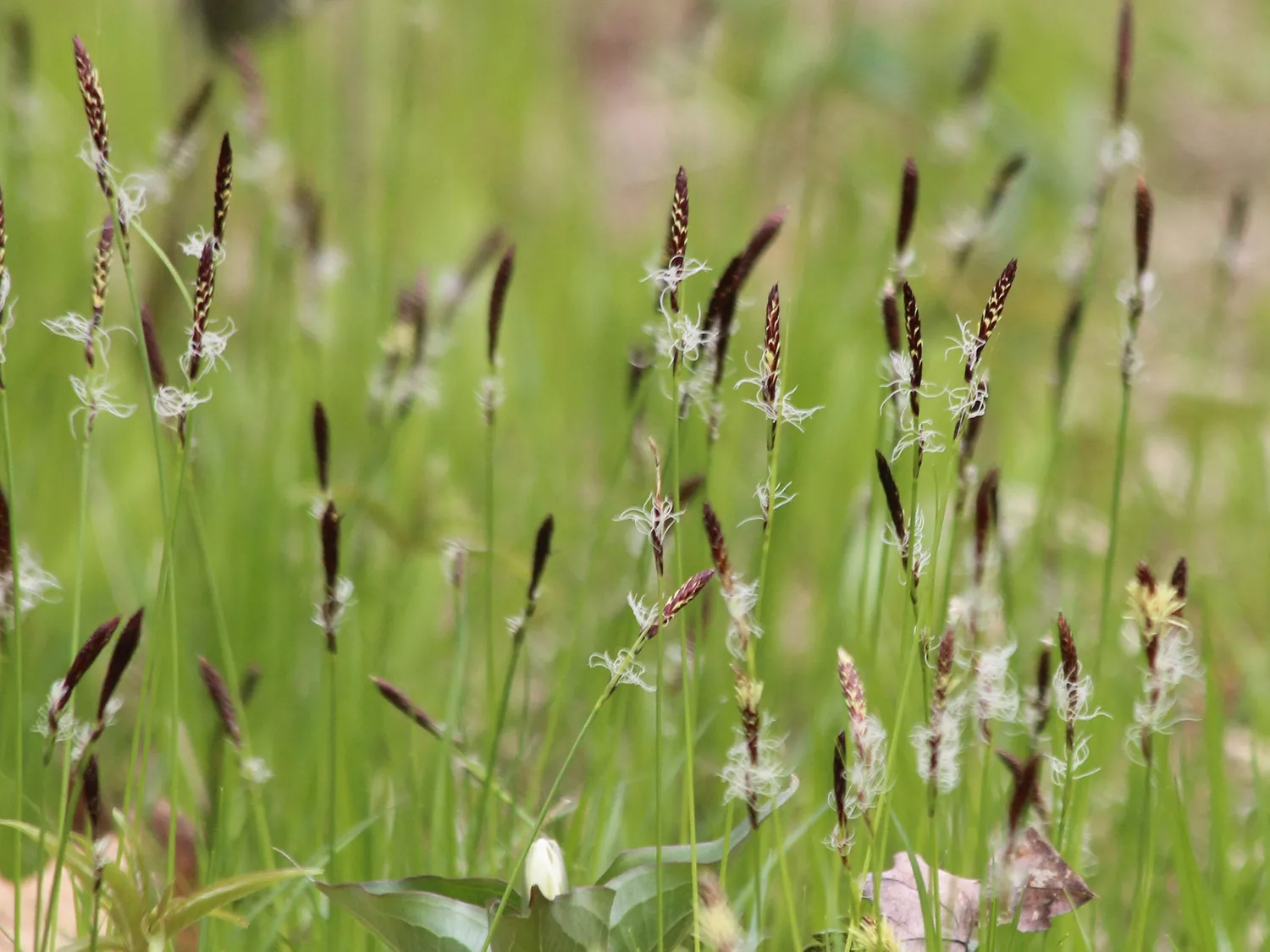
- Botanical Name: Carex pensylvanica
- Sun Exposure: Full to Partial Shade
- Soil Type: Dry to Medium, Well-draining
- Soil pH: Slightly Acidic (5.5-6.5)
An excellent lawn alternative for dry shade, Pennsylvania sedge provides the look and feel of grass without the fuss. Growing just 6 to 10 inches tall, Pennsylvania sedge requires mowing just once or twice a season to maintain a stand around three inches tall. Foliage is semi-evergreen in moderate winters and turns a golden tan color in autumn. Plants spread by rhizome to form loose colonies.
Dutch Clover
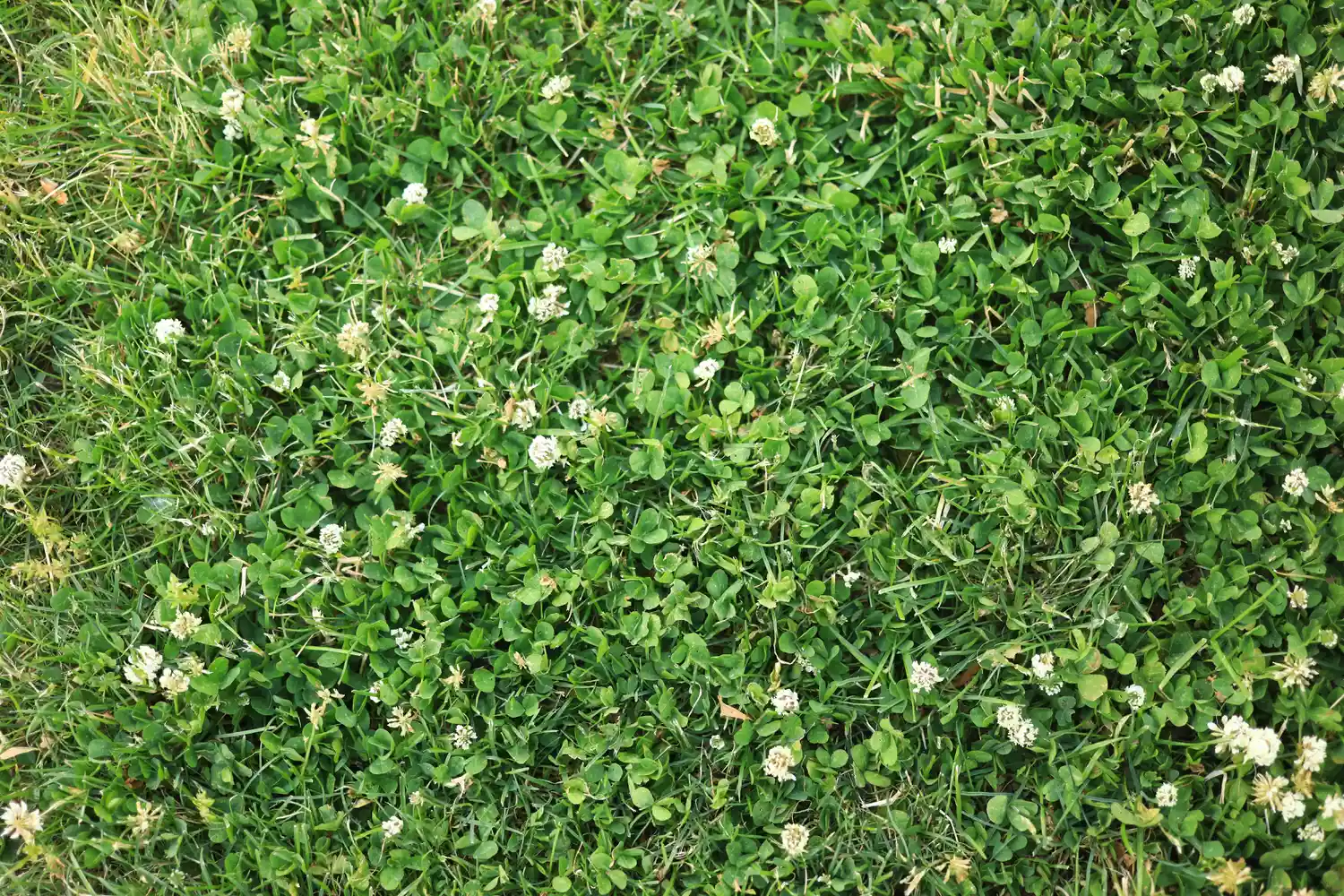
Getty Images / Douglas Sacha
- Botanical Name: Trifolium repens
- Sun Exposure: Full to Partial Sun
- Soil Type: Well-draining, Rich
- Soil pH: Slightly Acidic (5.5-6.2)
Once a common component of lawns, clovers were eradicated from turf with the advent of lawn chemicals following World War II, much to the detriment of both lawns and pollinators. Clovers are nitrogen fixing plants and integrating them into lawns helps reduce fertilizer needs. Clovers also provide a valuable source of nectar to native pollinators. White or Dutch clover is the most common clover used in lawns today. A compact variety called microclover has gained popularity as a lawn substitute. Clovers tolerate heavy foot traffic.
Sweet Woodruff
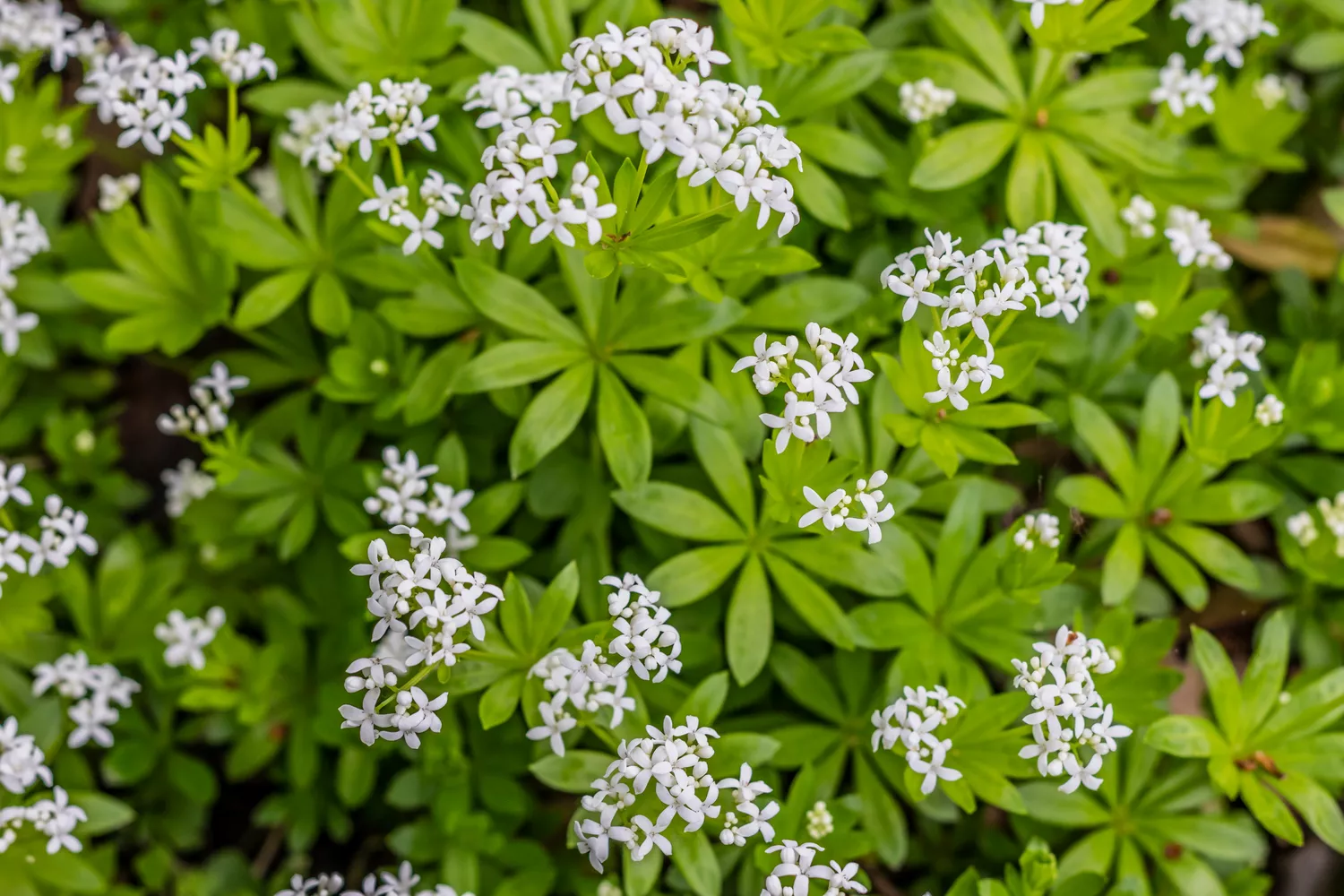
Getty Images / Annimei
- Botanical Name: Galium odoratum
- Sun Exposure: Full to Partial Shade
- Soil Type: Medium to Wet, Well-draining, Average
- Soil pH: Acidic (5.0-6.8)
Sweet woodruff is a gorgeous groundcover for shade gardens that looks beautiful planted in large swaths. It does not tolerate foot traffic but provides excellent coverage in heavy shade. Plants tolerate deer and rabbit browsing and even grow well beneath black walnuts trees. Small, fragrant white flowers open in loose bundles in spring.
Creeping Phlox
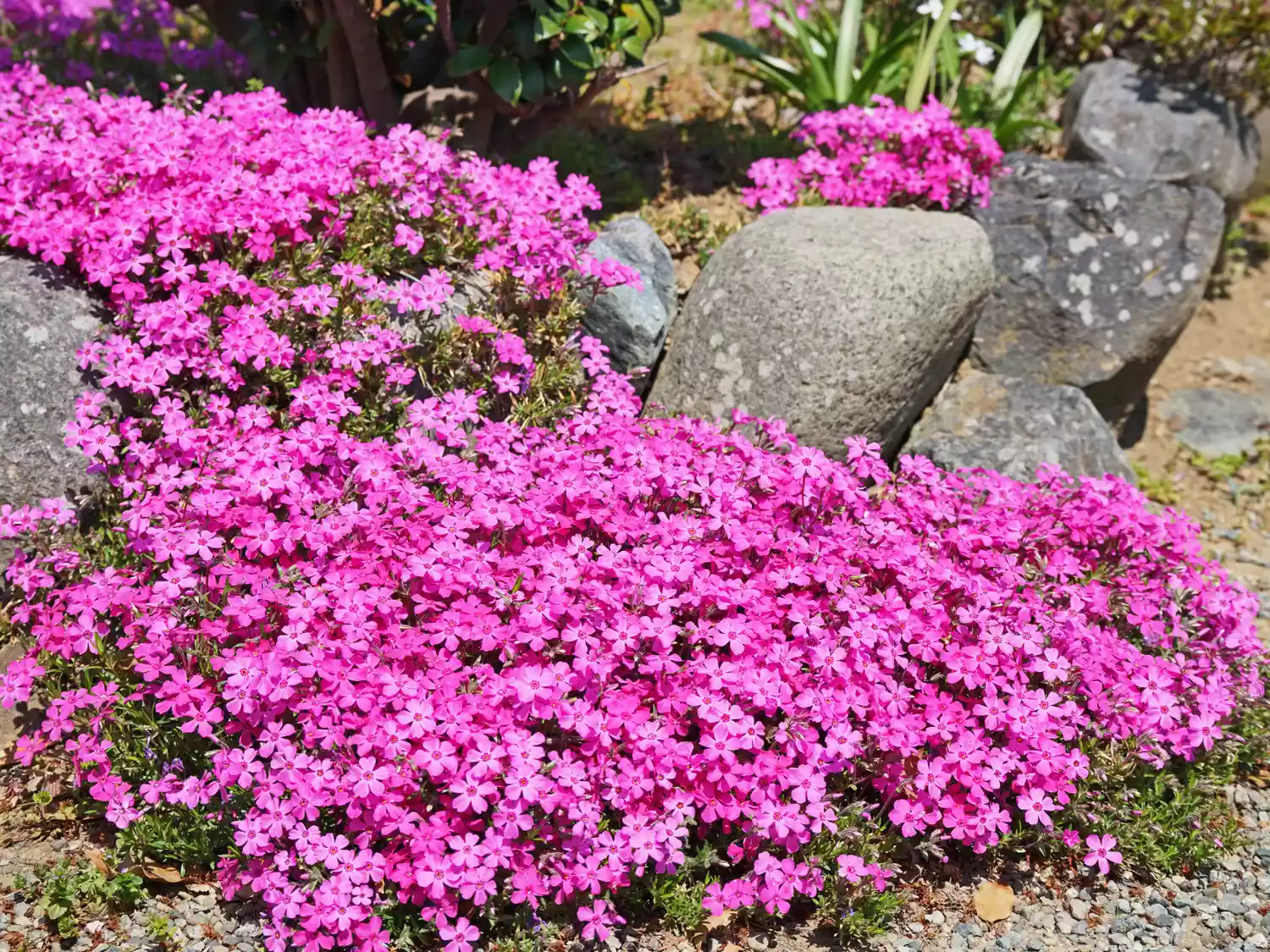
Getty Images / igaguri_1
- Botanical Name: Phlox subulata
- Sun Exposure: Full to Dappled Sun
- Soil Type: Medium, Well-draining
- Soil pH: Slightly Acidic (5.0-6.8)
This native perennial tolerates hot, dry sites and provides erosion control in a variety of garden settings. Showy blooms in hues of pink, purple, blue, or white attract butterflies and other pollinators to the garden. Creeping phlox provides a colorful semi-evergreen groundcover in areas where walkable surfaces are not needed. Plants spread quickly and tolerate a wide range of growing conditions including rocky or salty sites.
Blue Mazus
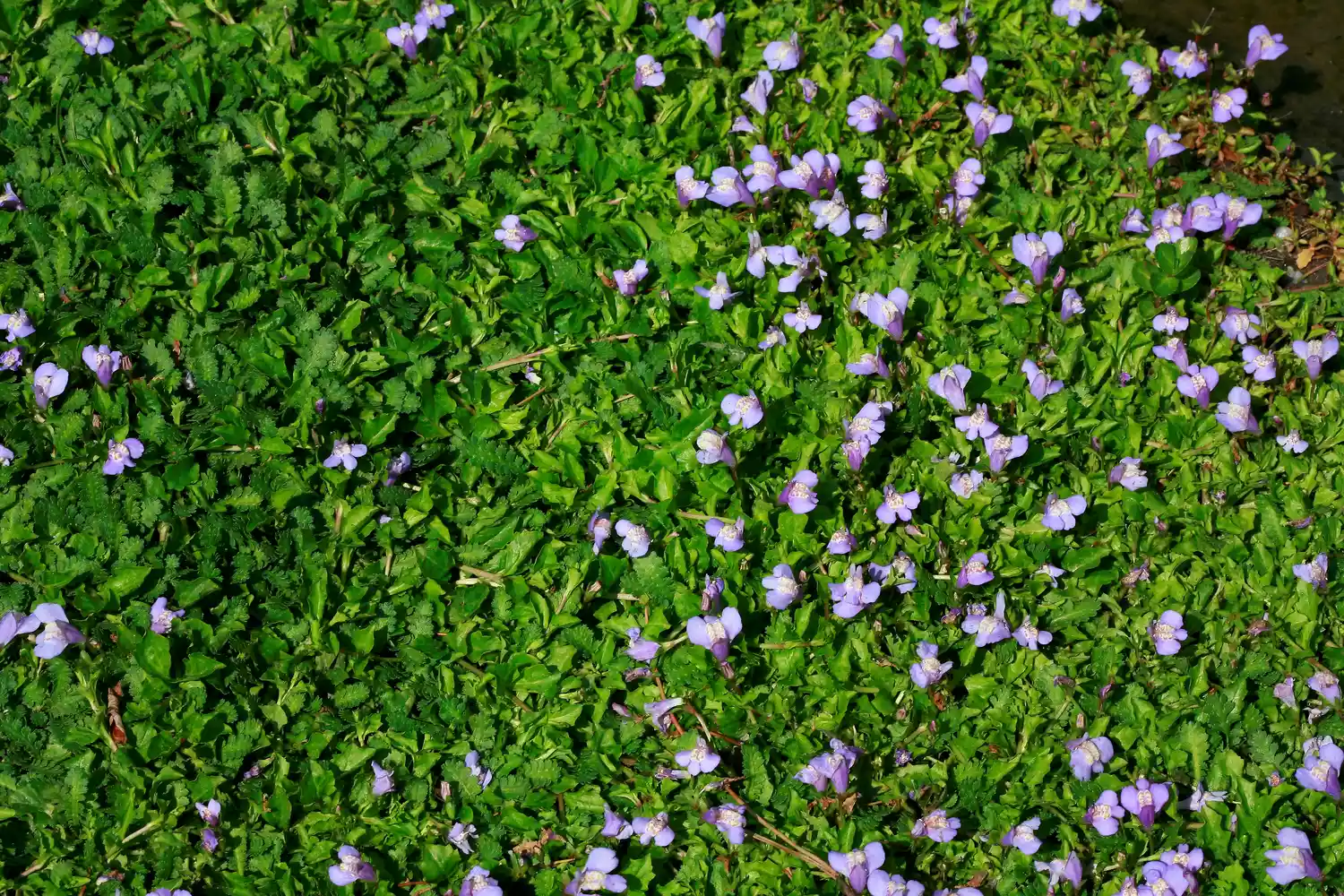
Getty Images / EDA&CO
- Botanical Name: Mazus reptans
- Sun Exposure: Full to Partial Sun
- Soil Type: Medium to Wet, Well-draining, Average
- Soil pH: Slightly Acidic to Alkaline (6.0 to 8.5)
This tough groundcover makes an excellent lawn alternative in small areas. Plants tolerate foot traffic, occasional mowing, and a range of soil conditions. Gorgeous purple-blue flowers add color in spring through early summer. Blue mazus also works well between stepping stones or as a ground cover in rain gardens.
Buffalograss
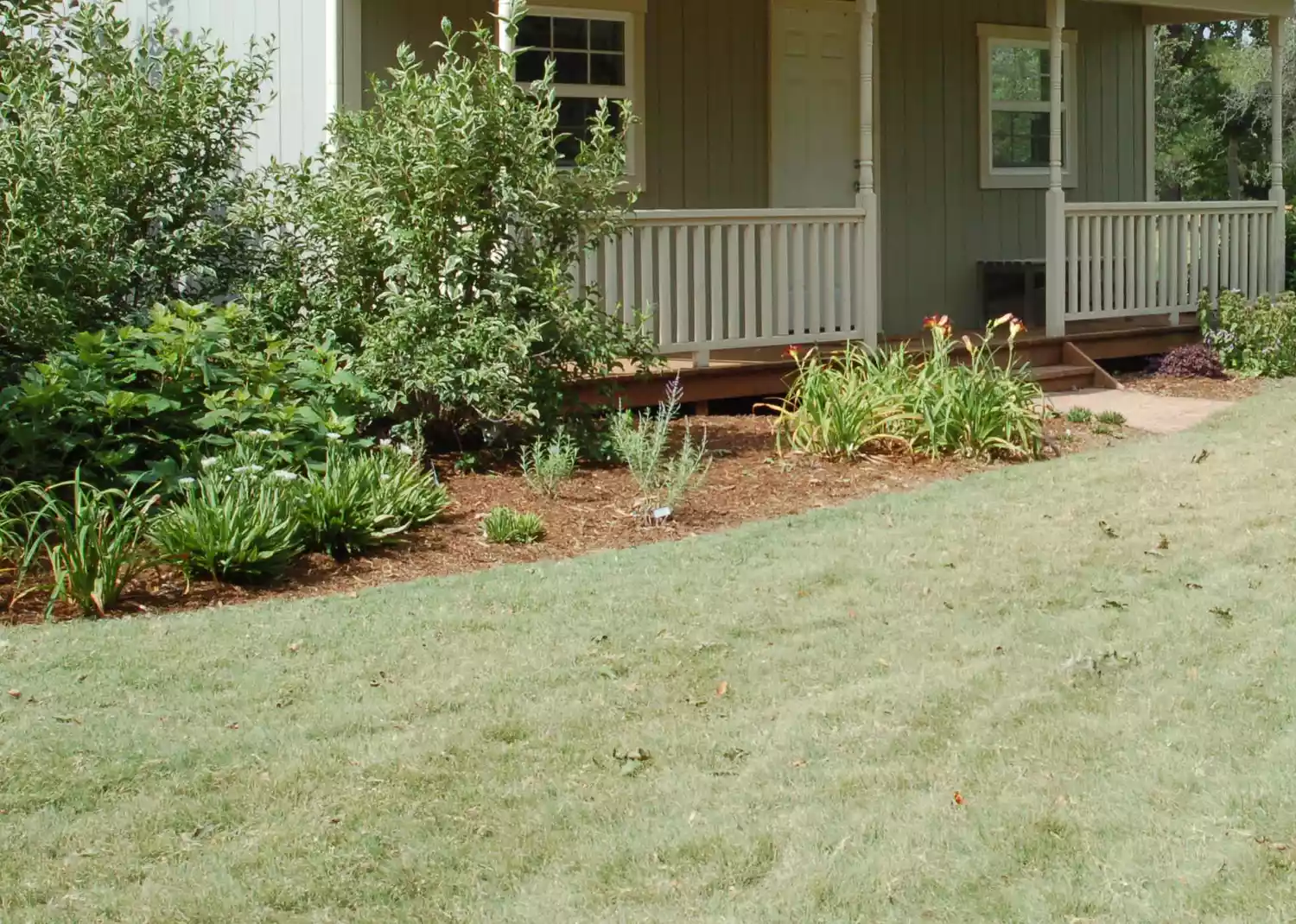
- Botanical Name: Buchloe dactyloides
- Sun Exposure: Full
- Soil Type: Dry to Moist, Well-draining
- Soil pH: Neutral to Slightly Alkaline (6.5 to 8.4)
One of our native turf species, buffalograss once covered large swathes of the southern plains. It is an excellent alternative to bermudagrass and other exotic turf species, creating a lush, dense lawn that stands up to heat and drought while requiring fewer inputs of water and fertilizer. The fine foliage is soft to the touch, making an excellent play surface. Buffalograss is a larval host plant for several species of skipper butterfly and the seeds are eaten by songbirds.
Selfheal
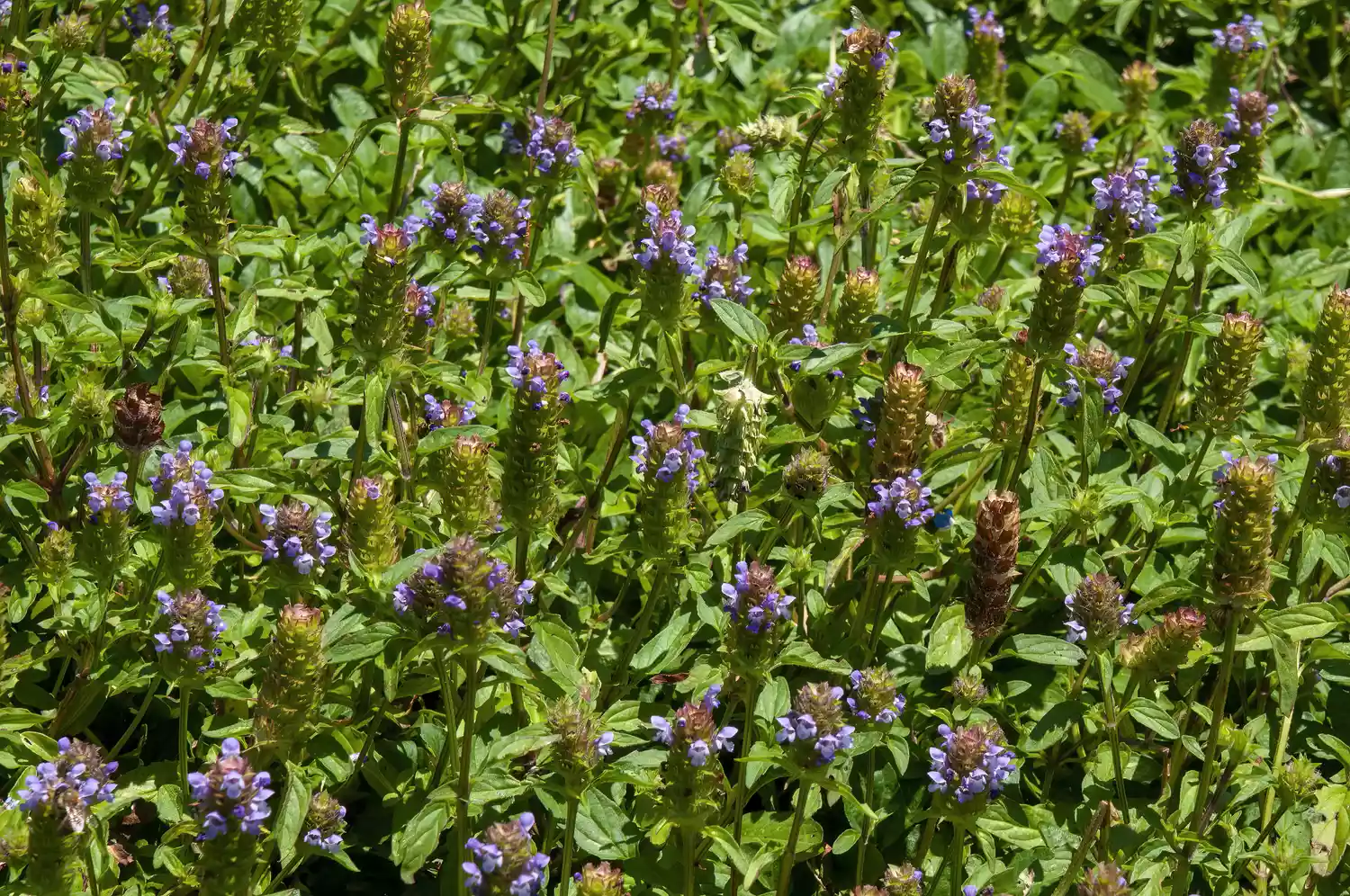
Getty Images / Karin de Mamiel
- Botanical Name: Prunella vulgaris ssp. lanceolata
- Sun Exposure: Full to Partial Sun
- Soil Type: Moist, Well-draining
- Soil pH: Slightly Acidic to Slightly Alkaline (5.5-8.0)
Another plant once common in lawns and considered a weed by some, selfheal is being promoted as a component of “Bee Lawns”—mixed lawn plantings for recreational use that also provide nectar resources for native pollinators. Selfheal is a native perennial with purple blooms mid to late summer, providing nectar for native bees and butterflies. It is also a host plant for larvae of the Clouded Sulphur butterfly. It benefits from partial shade in hot gardens.
Irish Moss
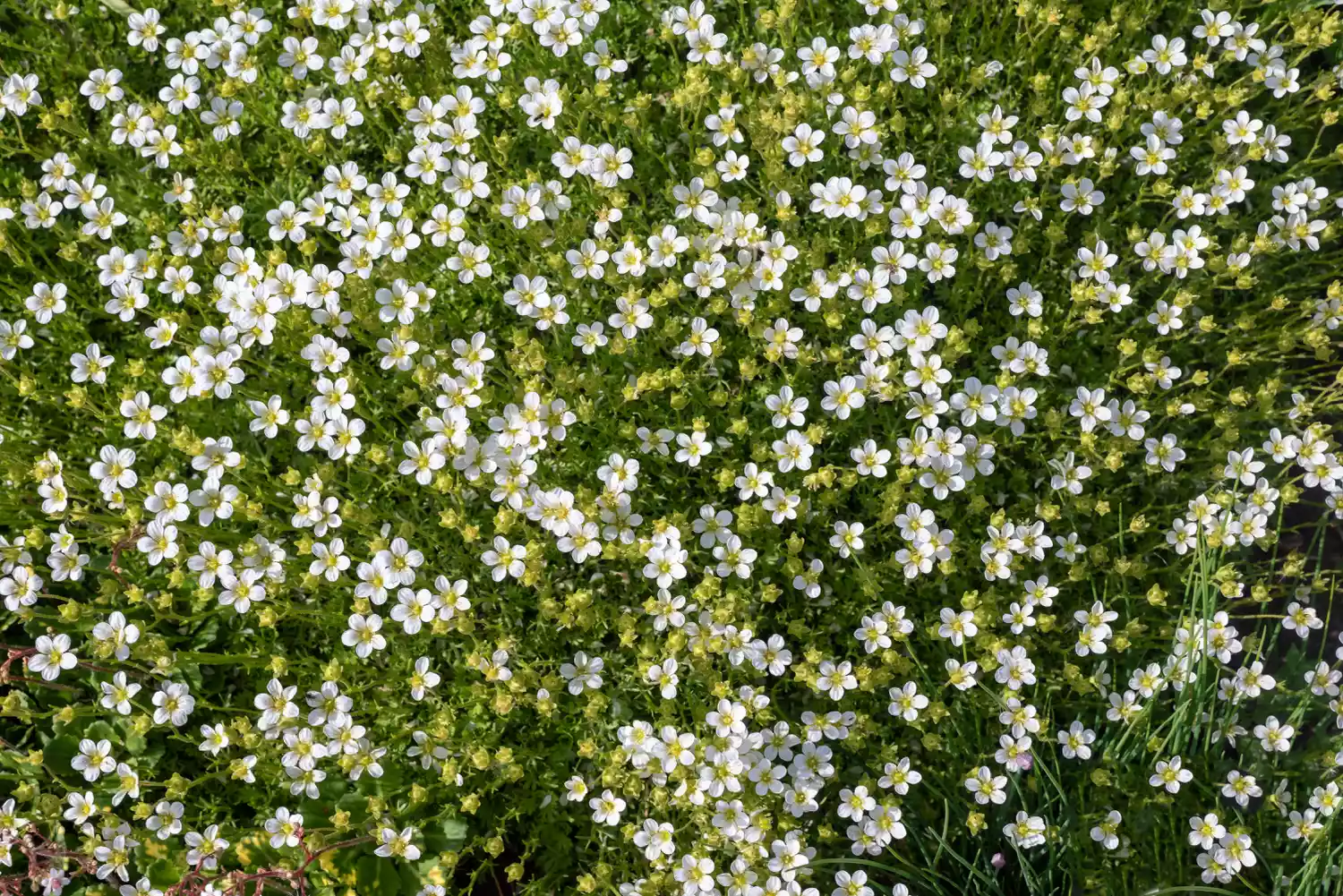
Getty Images / delobol
- Botanical Name: Sagina subulata
- Sun Exposure: Partial Shade, Afternoon Shade
- Soil Type: Moist, Well-draining, Rich
- Soil pH: Acidic to Neutral (5.5-7.0)
Not a true moss, Irish moss is a groundcover related to carnations. Plants mimic moss, producing dense mats of fine, deep green foliage that hugs the ground. Small white daisy-like flowers cover plants in spring and emerge periodically throughout the season. Irish moss is evergreen and tolerates moderate to heavy foot traffic, making a lovely lawn alternative. It looks beautiful planted between flagstone or stepping stones.
Dwarf Mondo Grass
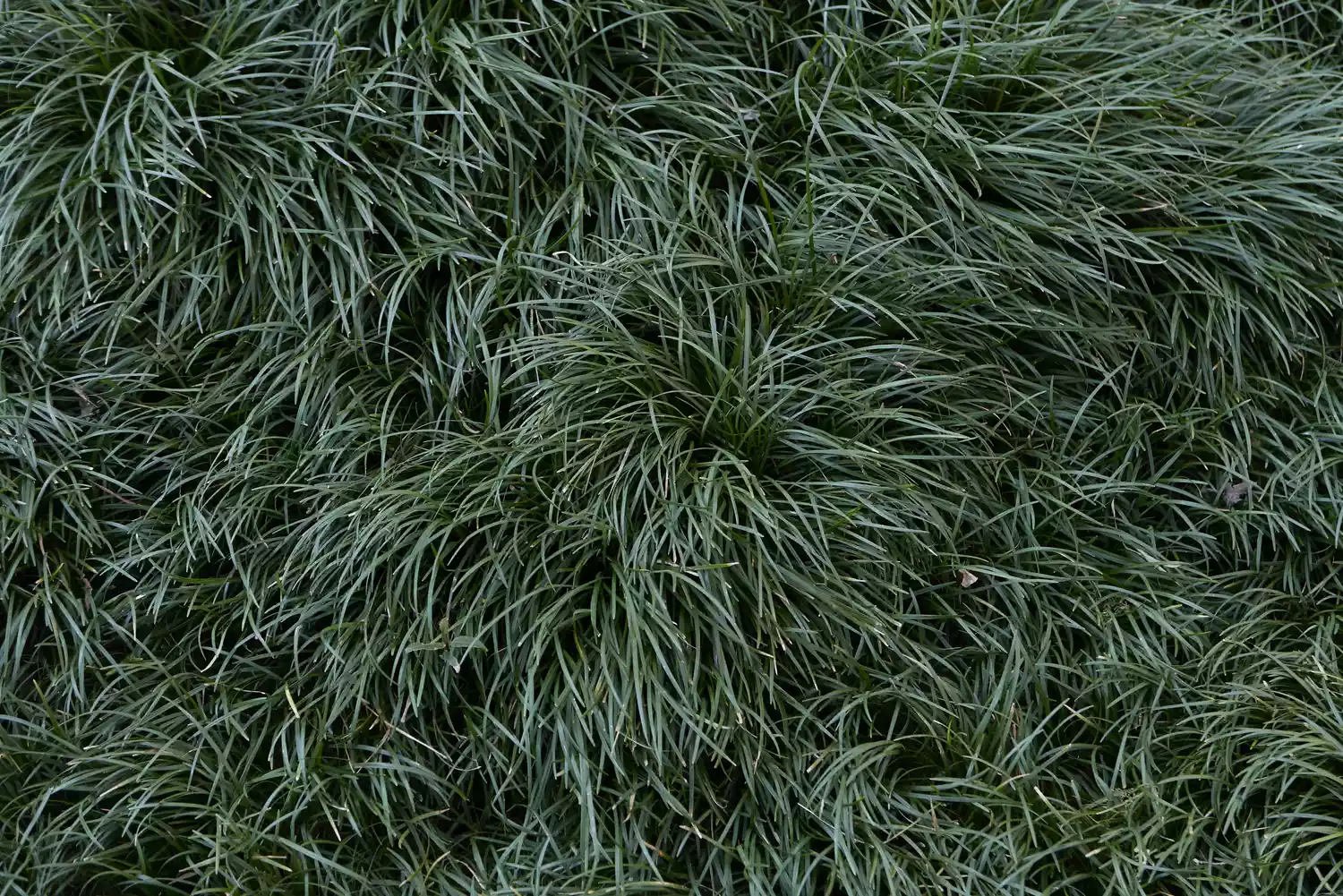
Getty Images / seven75
- Botanical Name: Ophiopogon japonicus ‘Nana’
- Sun Exposure: Full to Partial Shade
- Soil Type: Moist, Well-draining, Rich
- Soil pH: Slightly Acidic (5.5-6.5)
This deep green, grass-like plant makes an ideal mow-free lawn substitute for shaded areas. Plants stand up to foot traffic, drought, salt spray, and animal browsing. Dwarf mondo grass thrives in heavy shade and can be grown under black walnut trees. The main challenge with dwarf mondo is its price tag. Plants, especially the black variety called ‘Nigrescens’, tend to be expensive and slow growing.
Frogfruit
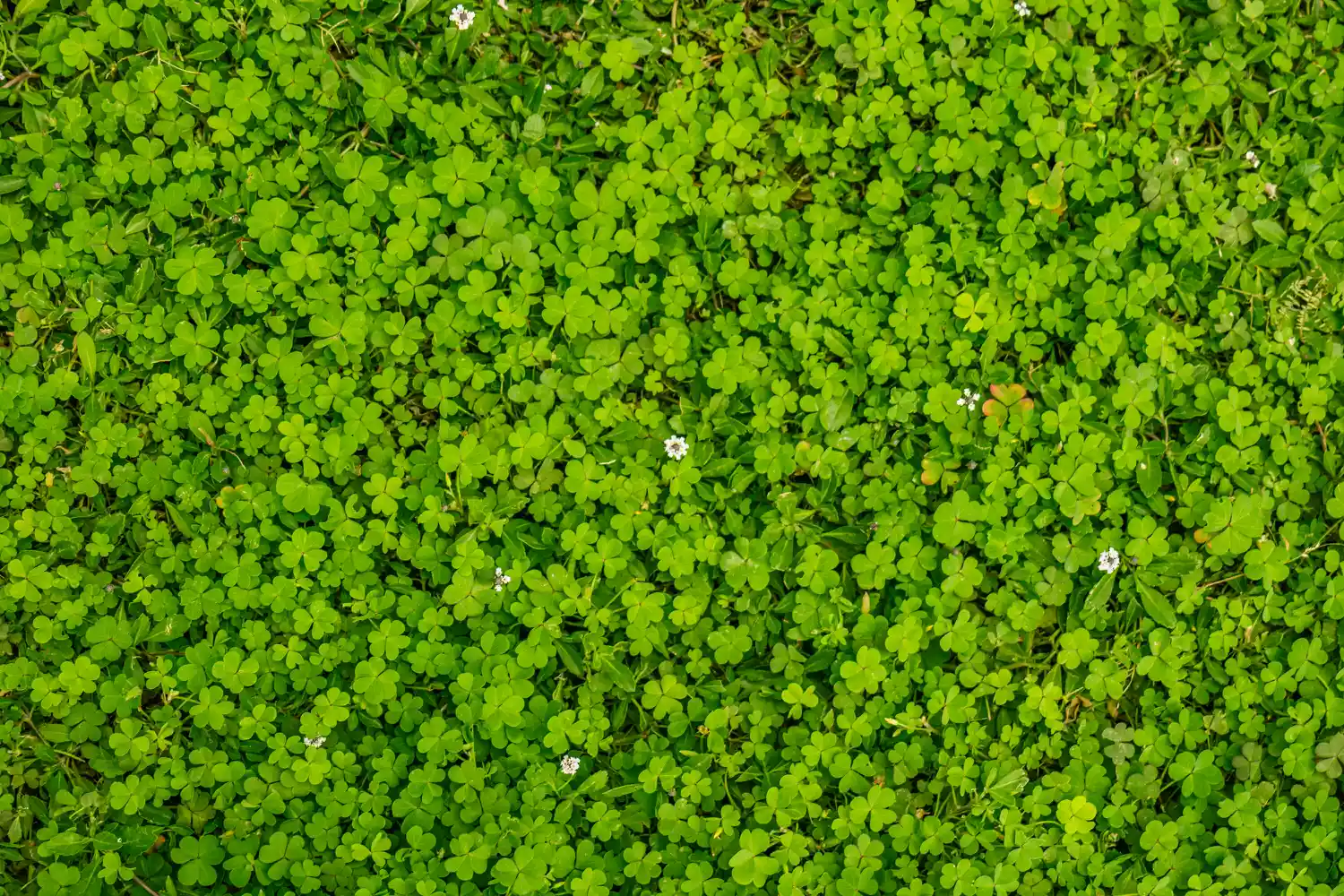
Getty Images / Arnold Petersen
- Botanical Name: Phyla nodiflora
- Sun Exposure: Full to Partial Sun
- Soil Type: Well-draining, Rich
- Soil pH: Slightly Acidic (5.5-6.2)
Gardeners in places as diverse as Texas and Florida are planting frogfruit as a lawn alternative. Though it looks nothing like your typical lawn grass, this low-growing native perennial provides evergreen foliage and abundant blooms for color all year long. Plants bloom throughout most of the year, attracting a diversity of skippers and butterflies, including Queens and the endangered Miami blue butterfly. Plants are quite adaptable to a range of sun and soil conditions.
Stonecrop

Getty Images / Irina Pislari
- Botanical Name: Sedum spurium ‘John Creech’
- Sun Exposure: Full
- Soil Type: Dry to Medium, Well-draining
- Soil pH: Slightly Acidic to Neutral (5.5 – 7.8)
Growing as a low, dense mat, ‘John Creech’ sedum is one tough groundcover. Despite their fleshy leaves, plants tolerate moderate foot traffic. They also stand up to heat and drought. Plants are not bothered by deer or rabbits and tolerate poor soil. A late summer flush of vibrant pink blooms attracts butterflies to the garden. Use as a groundcover along walkways, to stabilize soil on sunny banks or slopes, or to edge patios.


